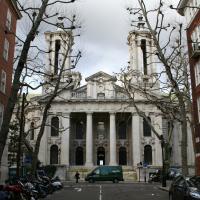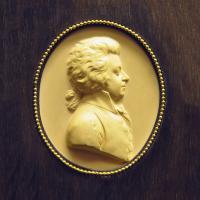Mozart composed this motet for accompanied four-part chorus in June 1791 at the request of Anton Stoll, the local organist and choirmaster in the small spa town of Baden, not far from Vienna, where Mozart’s wife Constanze spent the last weeks of her sixth pregnancy. In gratitude to Stoll, who looked after his wife while Mozart was going back and forth to Vienna, the composer set the fourteenth-century Eucharistic hymn Ave verum Corpus (Hail, true Body) to music, to be performed on the feast of Corpus Christi.
A musical miniature of only forty-six bars, the motet is famed for being one of the most perfect, yet simple expressions of devotion ever composed. Unadorned and easily understood, the subtle harmonic shifts in the writing perfectly respond to the meaning of the text, such as the achingly beautiful chromaticisms underlining the crucial words ‘immolatum’ (offered in sacrifice) and ‘perforatum’ (pierced). The final ‘In mortis examine’, the plea to let Christ’s death be transformed into salvation in our own hour of death, is repeated a second time, with a short moment of intense anxiety, before returning to the reassuring home key of D major
|
Ave verum Corpus, natum de Maria Virgine: |
Hail, true Body, born of the Virgin Mary, |
Composer: Mozart Wiki Link: http://en.wikipedia.org/wiki/Ave_verum_corpus_%28Mozart%29 Title of Musical Work: Ave Verum Corpus


